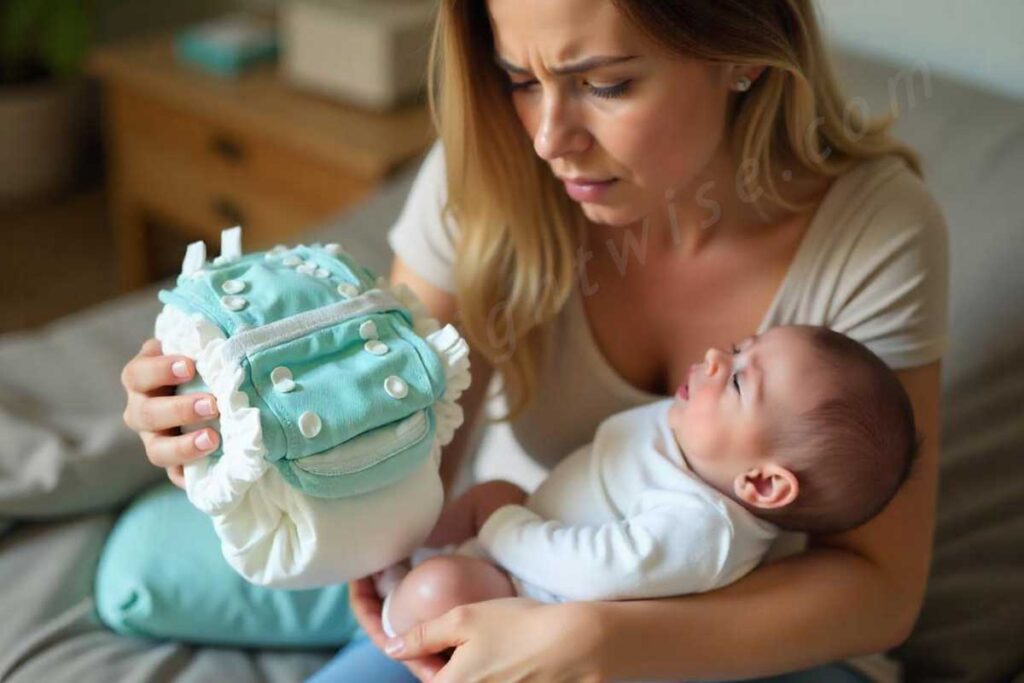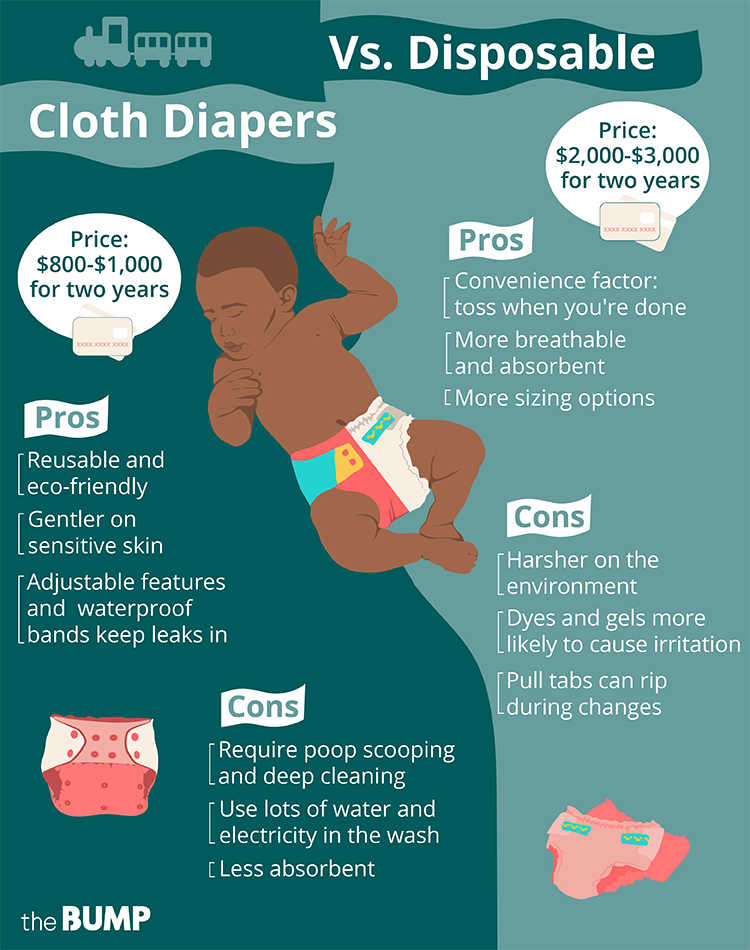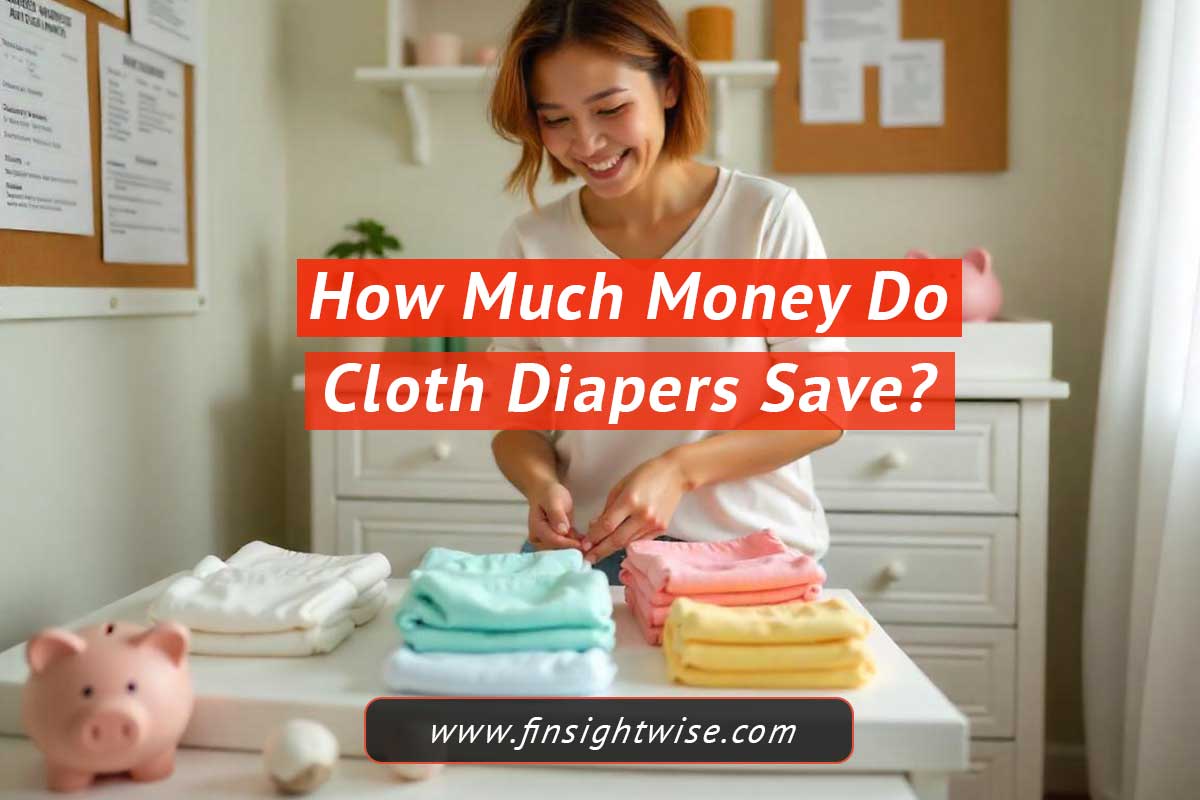Welcome to the world of diapering, where parents often find themselves torn between convenience and sustainability. If you’ve ever wondered how much money do cloth diapers save, you’re not alone. Many families are exploring this eco-friendly option, intrigued by the potential benefits.
Cloth diapers have gained popularity not just for their environmental impact but also for their cost-effectiveness. The initial investment may seem high, but when you look closer, the savings can be significant. Understanding the financial implications can help you make a more informed choice.
In this article, we will dive deep into the costs associated with both disposable and cloth options. From hidden expenses to long-term savings, we’ll uncover the true financial picture of diapering. Are you ready to discover how much money do cloth diapers save?
Join us as we explore the fascinating world of diapering and reveal the answer to most common parents question: do cloth diapers save money? You might just find that making the switch is not only good for your wallet but also for the planet.
Table of Contents
ToggleWhat is a Cloth Diaper and What It Is Made Of?
A cloth diaper, also known as a reusable diaper, is an eco-friendly alternative to disposable diapers. It is designed to be washed and reused, making it a sustainable choice for parents.
Materials Used in Cloth Diapers
Cloth diapers are primarily made from textiles such as natural fibers and synthetic materials. Common natural fibers include cotton, bamboo, and hemp, while synthetic options often involve microfiber and polyurethane laminate.
Types of Fabrics
The outer layer of cloth diapers is typically waterproof, preventing leaks. The inner layer is absorbent, ensuring moisture is locked away from the baby's skin. This combination provides comfort and functionality.
Varieties of Cloth Diapers
There are several types of cloth diapers available, each with unique features. Popular types include all-in-one diapers, pocket diapers, and prefold diapers.
All-in-One Diapers
All-in-one (AIO) diapers consist of a waterproof outer layer combined with absorbent materials sewn together. They are easy to use and require no additional inserts.
Pocket Diapers
Pocket diapers have a waterproof shell with an inner pocket where absorbent inserts can be placed. This allows for customization based on the baby's needs.
Prefold Diapers
Prefold diapers are rectangular pieces of fabric that require folding before use. They are highly absorbent and often need a waterproof cover to prevent leaks.
Benefits of Using Cloth Diapers
Cloth diapers offer numerous benefits including cost savings over time, reduced environmental impact, and the ability to customize absorbency levels. They also come in various colors and designs, making them visually appealing.

Benefits of Using Cloth Diaper Over Disposable Diapers for Babies
Choosing between cloth and disposable diapers is a common dilemma for new parents. Each option has its unique advantages, but cloth diapers often stand out for several compelling reasons.
Cost-Effectiveness
Cloth diapers require a higher initial investment but can save families significant money over time. When used consistently, they can reduce diapering costs by up to $2,000 per child.
Environmental Impact
Using cloth diapers helps minimize waste. Unlike disposables, which can take centuries to decompose, cloth diapers are reusable and significantly lower the amount of trash sent to landfills.
Health Benefits
Cloth diapers are typically made from natural materials without harmful chemicals. This reduces the risk of skin irritation and diaper rash for sensitive babies.
Potty Training Advantages
Some studies suggest that babies in cloth diapers may potty train faster. The feeling of wetness in cloth can encourage earlier recognition of the need to use the toilet.
Comfort for Babies
Many parents find that cloth diapers provide better comfort for their babies. They are often softer and more breathable than disposable options, promoting a healthier skin environment.
Frequent Changes
The need for more frequent diaper changes with cloth can be beneficial. This encourages parents to check and change their babies regularly, which can help prevent rashes.
While both cloth and disposable diapers have their pros and cons, the benefits of cloth diapers—cost savings, environmental friendliness, health advantages, and comfort—make them an appealing choice for many families.
The Cost of Disposable Diapers
Initial Costs
When considering disposable diapers, the initial costs can add up quickly. On average, parents spend around $80 per month on disposable diapers. This figure can vary based on brand and frequency of changes.
Lifetime Costs
Calculating the lifetime costs of disposable diapers reveals a staggering total. From birth until potty training, which typically occurs around 2.5 years, families can expect to spend approximately $2,400. This is a significant financial commitment.
Hidden Costs
In addition to the direct costs of purchasing diapers, there are hidden expenses to consider. These may include:
- Diaper rash creams: Many parents find they need to invest in creams to prevent rashes caused by disposables.
- Disposal bags: Special bags for disposing of used diapers can add to the monthly expenses.
- Wipes and accessories: The cost of wipes and other diapering accessories should also be factored in.
When all these factors are taken into account, the true cost of using disposable diapers can be quite surprising.
The Cost of Cloth Diapers
Initial Investment
The upfront costs for cloth diapers can vary significantly. On average, parents may spend around $300 to build a complete stash of cloth diapers. This includes various types and sizes to accommodate growth.
Long-Term Savings
Cloth diapers can be reused multiple times, leading to substantial long-term savings. With a well-maintained stash, families can expect to spend only about $300 over the entire diapering period, compared to thousands spent on disposables.
Maintenance Costs
While cloth diapers save money in the long run, there are some maintenance costs to consider. These include:
- Washing supplies: Detergents specifically designed for cloth diapers may be necessary.
- Water and energy costs: Washing and drying diapers will increase utility bills slightly.
- Accessories: Items like diaper covers, liners, and wet bags also contribute to overall expenses.
Despite these costs, many families find that the benefits of cloth diapering far outweigh the expenses.
Disposable Diapers Vs Cloth Diapers - Comparing Costs
Cost Comparison Table
To better understand the financial implications, let's look at a cost comparison between disposable and cloth diapers. This table illustrates the differences in initial and lifetime costs:
| Type of Diaper | Initial Cost | Monthly Cost | Total Cost (2.5 years) |
|---|---|---|---|
| Disposable Diapers | $0 | $80 | $2,400 |
| Cloth Diapers | $300 | $20 | $300 |
Break-Even Analysis
When comparing these costs, it becomes clear that cloth diapers can lead to significant savings over time. The break-even point occurs after approximately six months of using cloth diapers, making them a financially sound choice.
Long-Term Financial Benefits
Choosing cloth diapers not only reduces costs but also provides long-term financial benefits. Families can reuse cloth diapers for subsequent children, further maximizing their investment. This makes cloth diapering a sustainable option for many households.
Environmental Impact
Waste Generated by Disposable Diapers
Disposable diapers contribute significantly to landfill waste. Each year, millions of diapers are discarded, taking hundreds of years to decompose. This environmental burden raises concerns about sustainability and the impact on our planet.
Sustainability of Cloth Diapers
In contrast, cloth diapers offer a more sustainable alternative. They can be washed and reused multiple times, significantly reducing the amount of waste generated. Choosing cloth not only benefits your wallet but also helps minimize your ecological footprint.
Long-Term Environmental Benefits
By opting for cloth diapers, families can contribute to a healthier environment. Some long-term benefits include:
- Reduced landfill waste: Fewer disposables mean less trash in landfills.
- Lower carbon footprint: The production and disposal of disposables require significant resources.
- Eco-friendly materials: Many cloth diapers are made from organic or recycled materials, further promoting sustainability.
Overall, choosing cloth diapers aligns with environmentally conscious values while providing financial savings.
Additional Benefits of Cloth Diapers
Health Benefits
Cloth diapers can offer several health advantages for your baby. They are often made from natural materials, which can reduce the risk of diaper rash and irritation caused by chemicals found in disposable options.
Customization Options
One of the appealing aspects of cloth diapers is the variety available. Parents can choose from different styles, colors, and materials to suit their preferences. This customization allows for a more personalized diapering experience.
Community Support
The cloth diapering community is vibrant and supportive. Many online resources, forums, and local groups provide valuable information and encouragement for new parents. Connecting with others can make the transition to cloth easier and more enjoyable.
Resources Available
Parents can access numerous resources to help navigate cloth diapering, including:
- Tutorials: Step-by-step guides on how to use and care for cloth diapers.
- Swapping groups: Opportunities to trade or buy second-hand diapers, making it more affordable.
- Workshops: Local events that educate parents about the benefits and use of cloth diapers.
These resources not only enhance the cloth diapering experience but also foster a sense of community among users.

Challenges and Considerations
Time Commitment
Using cloth diapers does require a time commitment that some parents may not anticipate. Regular washing and drying are essential, which can add to your weekly chores. However, many find the effort worthwhile for the savings and benefits.
Traveling with Cloth Diapers
Traveling with cloth diapers can pose unique challenges. Parents need to plan ahead to manage storage and cleaning while on the go. Here are some tips for traveling:
- Pack enough diapers: Bring more than you think you'll need to avoid running out.
- Use wet bags: These are essential for storing dirty diapers until you can wash them.
- Consider laundry options: Research local laundromats or facilities where you can wash diapers if needed.
Finding the Right Fit
Selecting the right type and size of cloth diaper is crucial for comfort and effectiveness. Different brands offer various fits, so it may take some trial and error to find what works best for your baby. Consider:
- Adjustable sizing: Look for diapers that grow with your child.
- Material preferences: Choose fabrics that suit your baby's skin sensitivity.
- Style options: Explore all-in-ones, pocket diapers, or prefolds based on your lifestyle.
Taking the time to find the right fit can enhance your cloth diapering experience and ensure your baby stays comfortable.
Frequently Asked Questions - FAQS
Q. How much do All-in-Two cloth diapers save compared to Pampers?
A. All-in-Two cloth diapers typically save families around $1,000 over the diapering period compared to Pampers. This savings stems from their reusable nature, reducing the need for frequent purchases of disposables.
Q. How much money do cloth diapers save over three years?
A. Over three years, cloth diapers can save families approximately $1,000 to $2,000. This range depends on the type of cloth system used and the frequency of diaper changes compared to disposable options.
Q. Is it worth using cloth diapers for two children?
A. Yes, using cloth diapers for two children is financially beneficial. Families can reuse the same diaper stash, leading to significant savings, often exceeding $2,000 over the diapering period for both children.
Q. How much money can I save on cloth diapers while reducing my environmental footprint?
A. By choosing cloth diapers, families can save around $1,000 while significantly reducing their environmental footprint. Cloth options minimize waste and decrease reliance on single-use products.
Q. How much can I save by using pocket diapers instead of all-in-ones?
A. Switching from all-in-ones to pocket diapers can save approximately $200 over time. Pocket diapers are generally less expensive and allow for customized absorbency, making them a cost-effective choice.
Q. How much money can I save using cloth diapers for a newborn versus a toddler?
A. Using cloth diapers for a newborn can save around $1,500, while savings for a toddler may be lower due to fewer changes needed daily. Overall, the savings are still substantial with both age groups.
Q. How much can I save using cloth diapers for two or more children?
A. Families using cloth diapers for multiple children can save upwards of $2,500. The ability to reuse the same stash significantly reduces costs across multiple diapering stages.
Q. How much can I save using cloth diapers in a small apartment with limited laundry facilities?
A. Even in a small apartment with limited laundry facilities, families can save around $800. Efficient washing practices and fewer disposables contribute to ongoing savings despite laundry constraints.
Q. How much can I save using cloth diapers for a child with sensitive skin?
A. Using cloth diapers for a child with sensitive skin can lead to savings of about $1,000. Cloth options often contain fewer chemicals, reducing irritation and potential costs associated with diaper rash treatments.
Q. How much does it cost to start using cloth diapers?
A. The initial investment in cloth diapers typically ranges from $300 to $600. This includes purchasing a sufficient stash of various types and sizes suitable for your baby’s needs.
Q. How much do laundry costs add up when using cloth diapers?
A. Laundry costs for cloth diapers usually add up to about $200 to $300 over two years. This includes water, electricity, and detergent expenses incurred from regular washing cycles.
Q. How much extra time is required for washing and preparing cloth diapers?
A. Washing and preparing cloth diapers may require an additional 2-4 hours per week. This includes time spent on washing, drying, and folding, which is manageable with proper planning.
Q. Do cloth diapers really save money in the long run?
A. Yes, cloth diapers do save money in the long run, often totaling around $1,000 or more. Their reusable nature significantly reduces ongoing expenses compared to disposable options.
Q. Can I sell my used cloth diapers to recoup some of the initial cost?
A. Yes, selling used cloth diapers is possible and can help recoup about 50% of the original cost. Many parents seek second-hand options, making resale a viable option for savings.
Q. What are the best tips for washing cloth diapers to maximize savings?
A. To maximize savings when washing cloth diapers, consider these tips: wash every 2-3 days, use cold water first followed by hot water, and line dry when possible to reduce energy costs.
Q. How much money can I save on diaper storage solutions?
A. Using simple storage solutions like wet bags or bins can save you around $50. These affordable options help keep your diapering area organized without excessive spending on fancy storage systems.
Q. How much money can I save on diaper disposal fees?
A. Families using cloth diapers can save approximately $400 on diaper disposal fees over two years by avoiding regular trash removal costs associated with disposables.
Q. How much money can I save by subscribing to a cloth diaper service?
A. Subscribing to a cloth diaper service typically saves families about $200 annually. These services provide convenience while still being more economical than disposable diaper purchases.
Q. How much money do I need to budget for cloth diaper maintenance, such as repairs or replacements?
A. Budgeting around $50 annually for maintenance is advisable when using cloth diapers. This covers occasional repairs or replacements needed due to wear and tear over time.
Conclusion
Recap of Financial Benefits
In summary, cloth diapers can lead to significant financial savings compared to disposables. By understanding the costs involved, families can appreciate how much money do cloth diapers save over time, making them a practical choice.
Overall Advantages of Cloth Diapers
Beyond the financial aspect, cloth diapers offer numerous benefits. From their positive environmental impact to the health advantages for your baby, choosing cloth can align with both your values and budget.
Encouragement for Families
As you consider your options, weigh the benefits of cloth diapering against your family's needs. With proper planning and support, transitioning to cloth can be a rewarding experience that benefits both your finances and the planet.
Final Thoughts
Ultimately, the decision to use cloth diapers is a personal one. By exploring all aspects, you can make an informed choice that suits your lifestyle while contributing to a more sustainable future.


